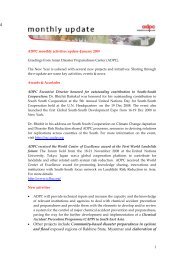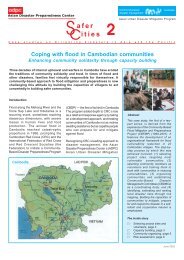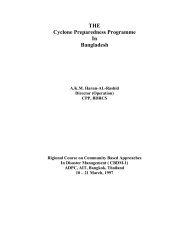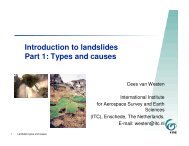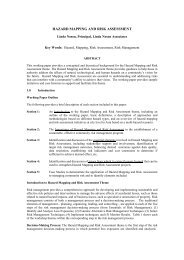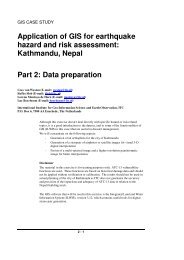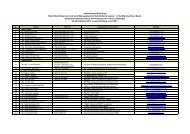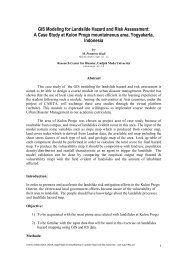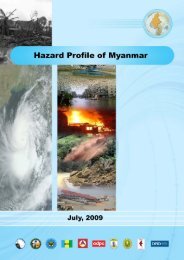community-based disaster risk management and the media media kit
community-based disaster risk management and the media media kit
community-based disaster risk management and the media media kit
You also want an ePaper? Increase the reach of your titles
YUMPU automatically turns print PDFs into web optimized ePapers that Google loves.
chapter 3. useful information for <strong>the</strong> <strong>media</strong><br />
Water requirements may increase to double <strong>the</strong> normal intake for animals<br />
during hot wea<strong>the</strong>r. Clean, fresh water is important. If animals do not<br />
meet <strong>the</strong>ir water needs, <strong>the</strong>y may refuse to eat, experience lowered<br />
production, become sick or die. Water supplies also may become a<br />
problem as <strong>the</strong> drought wears on. Wells <strong>and</strong> piping may be inadequate<br />
if water dem<strong>and</strong> increases dramatically; shallow wells <strong>and</strong> streams may<br />
dry up. You may need to transport water.<br />
• If animals are kept outside, provide shade during hot wea<strong>the</strong>r. Heat<br />
from <strong>the</strong> sun is a major culprit in overstressed animals.<br />
• Swine may sunburn during hot, sunny wea<strong>the</strong>r. Try to keep <strong>the</strong>m out<br />
of <strong>the</strong> sun.<br />
• Turn cows outside at night to cool <strong>the</strong>m <strong>and</strong> cool <strong>the</strong> barn. Since<br />
animals cool <strong>the</strong>mselves primarily through breathing, barns tend to<br />
get warm <strong>and</strong> humid quickly.<br />
• Maintain access to water. Provide automatic drinking cups so<br />
animals can meet <strong>the</strong>ir requirements during hot wea<strong>the</strong>r. Keep water<br />
containers clean.<br />
Do’s <strong>and</strong> Don’ts for Drought Preparedness<br />
Do<br />
• Arrangement of reasonable buffer stock of food grain<br />
<strong>and</strong> fodder<br />
• Ensure supply of good drinking water in rural areas for<br />
human <strong>and</strong> livestock in drought affected areas.<br />
• Assess fodder requirements in drought affected areas<br />
<strong>and</strong> locate areas where shortages are likely to occur<br />
<strong>and</strong> arrange supplies from outside.<br />
• Fodder cultivation to be encouraged wherever feasible<br />
• Rejuvenation of traditional rainwater system, viz. rivers,<br />
tanks, etc.<br />
• Rainwater harvesting for both drinking <strong>and</strong> cropping<br />
purposes<br />
• Management of human <strong>and</strong> livestock population to<br />
reduce pressure on fragile arid ecosystem<br />
87



